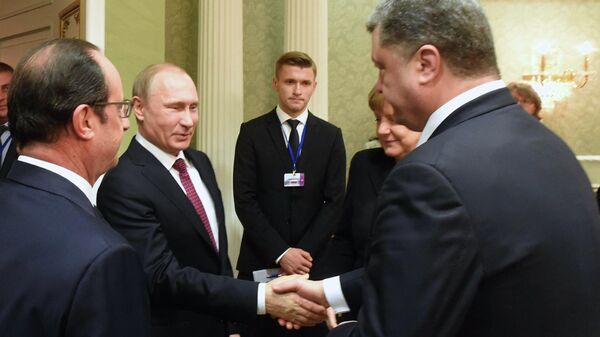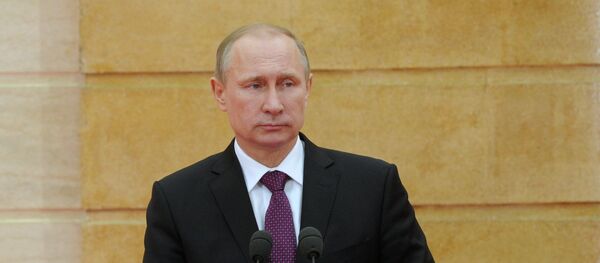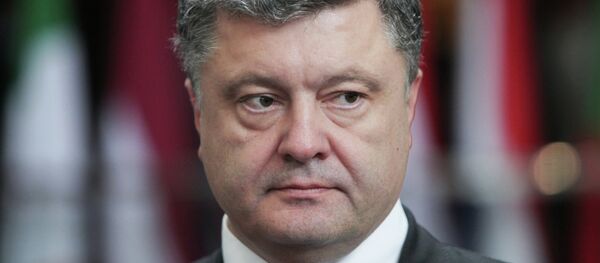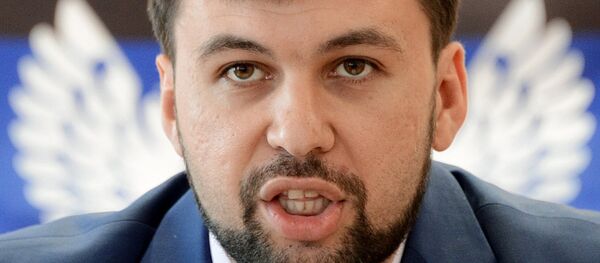All of this sounds fine and dandy in theory, but serious problems aren't being addressed in fact. In the countdown to the ceasefire, both sides are expected to wage an all-out war to consolidate their gains, and most observers are forgetting that there is still a sizeable (and violent) portion of Ukrainian society that is absolutely opposed to halting the fighting in Donbas.
While global eyes were directed on Minsk, the US announced that it would begin training Ukraine’s National Guard in March, showing that it’s digging itself even deeper into the country’s civil war and fortifying its influence in the country.
The Countdown
In the coming days, both Kiev and the southeastern Ukrainian republics will likely fight an all-out conflict to consolidate their respective gains to either use as bargaining chips in future negotiations or to hold on to for long-term gain.
No matter if heavy artillery is removed as expected or not, there are still thousands of troops on the ground more motivated than ever to ‘beat the clock’ and lay claim to as much territory as possible before the ceasefire commences.
A major unresolved issue is what becomes of Kiev’s troops encircled in Debaltseve, since if they remain there after the ceasefire and don’t surrender or are eliminated beforehand, it could create a bridgehead for the capital to claim more eastern territory, and possibly disrupt a sizeable segment of the self-proclaimed republics’ gains acquired since their counter-offensive last month.
Poroshenko’s Political Plight
The Aidar Battalion isn’t alone, as likeminded extreme nationalist groups such as oligarch Igor Kolomoyskiy’s Azov Battalion and Dmytro Yarosh’s Right Sector are also opposed to peace in Donbas. If these three groups teamed up and applied pressure on Poroshenko for being a ‘sell-out’ and ‘soft on terrorism’ (which is what they accused him of being during last September’s Minsk talks), then they could potentially rile up enough of the population to create serious destabilization in Kiev and possibly enact another color revolution, if not a direct militant coup.
Where’s Washington?
While the entire Minsk hubbub was dominating the news circuits, an important tidbit of information was lost on most of the global public. Ben Hodges, the commander of US Army Europe, announced that the American military will be training 600 members of Ukraine’s National Guard beginning in March. Semon Semenchenko, the commander of the pro-Kiev Donbas volunteer battalion, described the future exercises as being like “the traditional training systems of the US Navy Seals and Delta Force”, which are among the world’s most elite special forces units. This underreported news could likely be even more significant than the ‘ceasefire’ achieved at Minsk, since it has widely reverberating implications for any potential peace in Ukraine.
The US is now training the vanguard force for any future operations in Donbas, and these 600 individuals can then pass along their US-acquired skills and knowledge to other members of Kiev’s military.
This means that Blackwater’s training is no longer necessary (nor allowed by the proposed agreement), and that the mercenary trainers are simply being swapped out for actual US Army personnel.
Other than increasing the efficiency of Kiev’s forces, the US may also seek to train them in operating unfamiliar Western weaponry in preparation for its eventual delivery to Ukraine. No matter if there’s an active war in Donbas or not, that won’t prevent the US or its allies from selling weapons to Ukraine if they want to. The US can either do this directly via shipments through the Black Sea or indirectly through its Polish and Romanian proxies.
So in the greater mix of things, although Washington wasn’t present at the current Minsk talks, its growing military influence in Ukraine was definitely the elephant in the room that nobody wanted to address.







